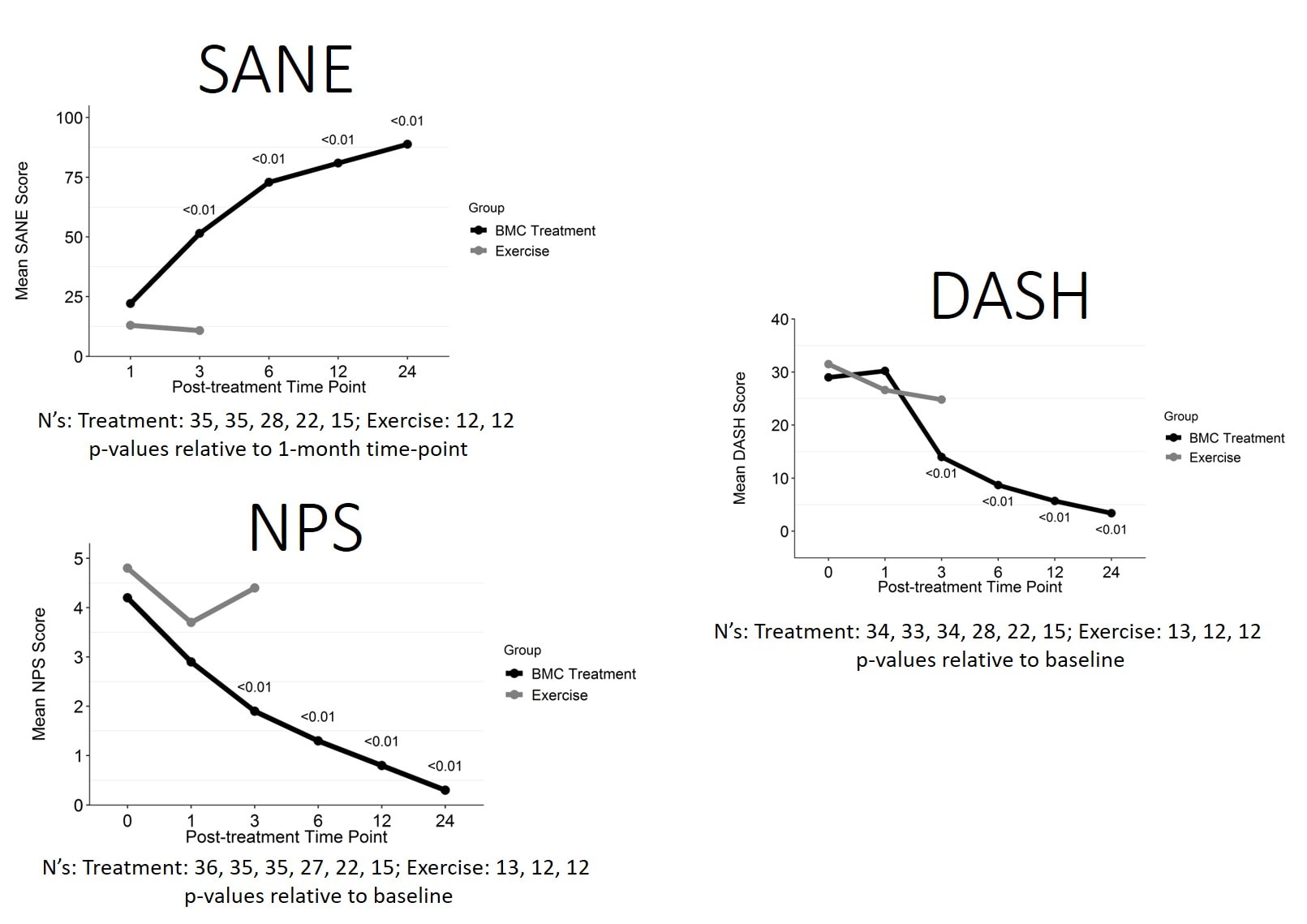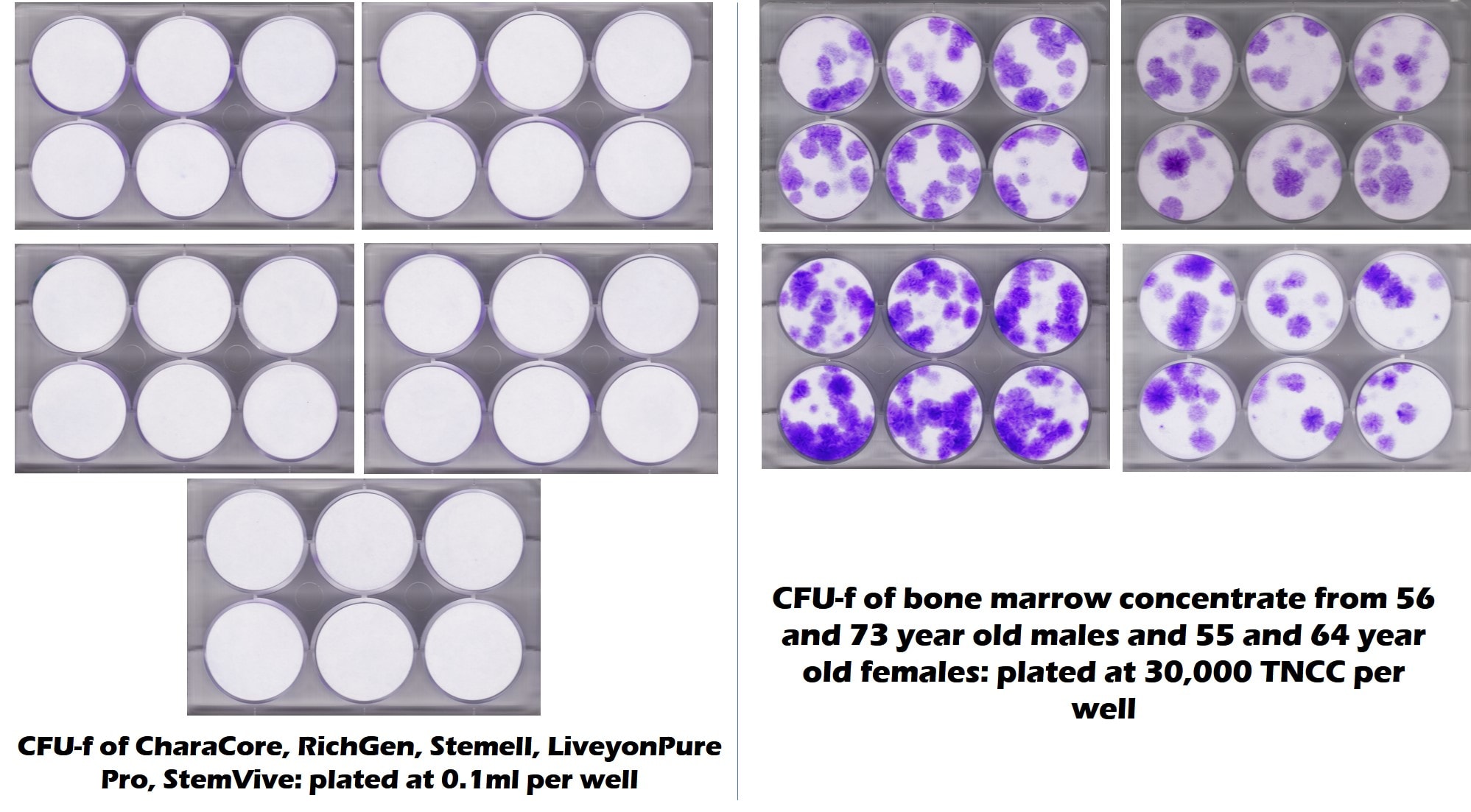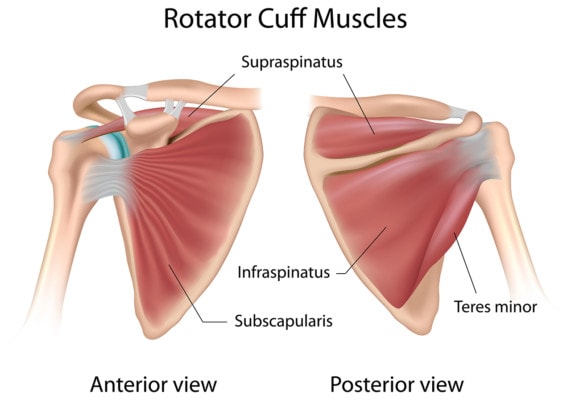Rotator Cuff Stem Cell Treatment: Does this Work?
You’ve probably seen ads in your local newspaper for rotator cuff stem cell treatments. Maybe you’ve been to a seminar? So can stem cells heal a rotator cuff? Does stem cell therapy work for shoulders? Let’s dig in.
Rotator Cuff Tears 101
The rotator cuff is a series of muscles and their tendons that surround the shoulder and help move the shoulder while supporting this ball in socket joint (1). It’s made of several muscles and their tendons including the supraspinatus, infraspinatus, teres, and subscapularis. The tendons can become torn with trauma or wear and tear or both. This can cause pain and weakness in the shoulder and often an MRI or ultrasound image is used to make the diagnosis. If you want more information on how to read that MRI CD or viewing link the imaging center gave you, check out my video below:
Avoiding Surgery: The Idea Behind Rotator Cuff Stem Cell Injections
The most common treatment for a rotator cuff tear that doesn’t respond to physical therapy is surgery to sew or anchor the torn part. Despite this, an analysis of eleven high-level research studies demonstrated that surgery wasn’t any better than physical therapy at restoring function (2). Hence, the promise of stem cell treatment for rotator cuff injuries is to enhance the body’s natural ability to heal.
Mesenchymal stem cells are a type of cell found in many areas of your body including the bone marrow, fat, and other tissues. They are the all-purpose repairmen of the body and these cells have the ability to help tendon injuries heal (3). This likely works both by the cells acting as a general contractor (by giving chemical orders to surrounding cells) and a host of other mechanisms including turning into tendon cells when needed.
Does Stem Cell Therapy Work for Shoulders?
Before I dive into whether stem cell therapy works for shoulders, we need to make sure you know what we’re reviewing. All of the research done to date for rotator cuff stem cell treatment that is legal in the US and Europe has been using the patient’s own stem cells, usually from bone marrow. In particular, no research has been published on amniotic or umbilical cord tissue as a source of stem cells. So if you went to a seminar and they promised you that the research is robust showing that these birth tissues can heal rotator cuff tears, regrettably that was a false statement. There’s more on that topic below.
When it comes to bone marrow stem cells helping rotator cuff tears heal, we can divide this research into two types. the first would be without surgery and the second would be with surgery.
Rotator Cuff Stem Cell Treatment without Surgery
We published the world’s first research paper on the use of the patient’s own bone marrow stem cells (aka bone marrow concentrate) on patients with rotator cuff tears and with and without osteoarthritis (4). We demonstrated excellent results in more than a hundred patients and followed that up with a randomized controlled trial that is just being completed now. Those results below show that when we compared a precise injection of the patients own bone marrow stem cells into the rotator cuff tear versus physical therapy, unlike surgery, the rotator cuff stem cell injection is the clear winner:

Since we first published that seminal paper in 2015, others have published showing similar results (5) This is supported by basic science studies in animals showing that bone marrow concentrate (BMC) helps build stronger tendon tissue and reduces some of the problems with healing tendons. Hence, we see every day in the clinic that precise injections of our high-dose BMC can help most patients avoid surgery.
Rotator Cuff Stem Cell Treatment with Surgery
The big unsettled controversy right now is whether you need surgery for most rotator cuff tears. That same debate spills over into the use of bone marrow stem cells as there are now injection-based methods to promote healing and those were stem cells are added to surgery. While a few patients with massive tears are clear surgical candidates, patients who could respond to stem cell injections alone often get surgery and patients who need surgery plus stem cells can often get scammed by clinics offering fake treatments (more on that below). So let’s dive in.
The first physician to use stem cells plus surgery was Hernigou in Paris, France. He injected BMC after surgery and reported that the retear rates dropped in half (7). A “re-tear” is where the tendon later tears despite being surgically repaired. We’re just starting to see academic surgeons begin to publish on using BMC in surgery with good results (9). Finally, other surgeons have successfully used a technique known as marrow stimulation whereby they poke holes in the bone to get local bone marrow stem cells to seep into the surgical repair (8).
Can Stem Cells Heal a Rotator Cuff?
While we know from a few different studies that stem cells can help heal rotator cuff tears when combined with surgery, is there evidence that rotator cuff stem cell injections can heal tendons without surgery? We have several before and after MRIs we’ve done through the years after using precision image guidance to inject high dose stem cells into the tear. See the images in my video below starting at 10:57:
Umbilical Cord and Amniotic “Stem Cells”
If you end up at a stem cell seminar offering rotator cuff stem cell procedures, you’ll likely hear that your stem cells are too old, hence you need to use amniotic or umbilical cord stem cells. You’ll be told that the clinic uses a product that is “FDA Approved” that comes from live births and contains million of young and vital stem cells. While all of that would be good if true, regrettably it’s all fiction.
Several research studies have shown that the commercially available “FDA Registered” (not Approved) birth tissue products used by these clinics have no living stem cells (10-12). How do these products compare to your own stem cells? The images below are of tests we performed with a local university on 5 commonly used umbilical cord products touted in these seminars. In this test, the purple dots mean that there are stem cells and 6 circles that are all white means no stem cells. Note that the umbilical cord products to the left contained no living stem cells, but the late middle-aged to elderly bone marrow to the right contained many stem cells:

What Does a Real Rotator Cuff Stem Cell Injection Look Like?
These procedures need to be done with ultrasound imaging and are not trivial to perform. The doctor should have received specialized training from a group like the Interventional Orthopedics Foundation. Here’s a video that shows you what a real rotator cuff stem cell injection should look like:
How Much Does Stem Cell Therapy Cost for Shoulder?
The interesting thing about stem cell therapy cost for the shoulder is that there is actually a broad spectrum of regenerative medicine options to avoid rotator cuff surgery. For example, for smaller rotator cuff tears, using your own concentrated blood platelets (Platelet-Rich Plasma or PRP) has been shown in some studies to work well (13,14). Our personal experience is quite good. I bring this up because the cost of a PRP injection can be 1/4 to 1/3 of some stem cell therapies.
If you need rotator cuff stem cell injections, expect to pay about $4,000-$8,000. However, like anything else, you tend to get what you pay for. Meaning discount therapies often use techniques that cut corners and are less likely to produce results. Hence, download my free book below to try to find the right clinic:
I also have a stem cell therapy cost pricing tool at this blog post.
The upshot? Rotator cuff stem cell procedures are now beginning to enter mainstream medicine. However, right now it’s buyer beware, so be careful not to get scammed. In the meantime, if done correctly, we’ve seen more than a thousand patients avoid rotator cuff surgery using a precision injection of high-dose bone marrow concentrate!
_____________________________________________
References:
(1) Huri G, Kaymakoglu M, Garbis N. Rotator cable and rotator interval: anatomy, biomechanics and clinical importance. EFORT Open Rev. 2019;4(2):56–62. Published 2019 Feb 20. doi:10.1302/2058-5241.4.170071
(2) Nazari G, MacDermid JC, Bryant D, Athwal GS. The effectiveness of surgical vs conservative interventions on pain and function in patients with shoulder impingement syndrome. A systematic review and meta-analysis. PLoS One. 2019;14(5):e0216961. Published 2019 May 29. doi:10.1371/journal.pone.0216961
(3) Costa-Almeida R, Calejo I, Gomes ME. Mesenchymal Stem Cells Empowering Tendon Regenerative Therapies. Int J Mol Sci. 2019;20(12):3002. Published 2019 Jun 19. doi:10.3390/ijms20123002
(4) Centeno CJ, Al-Sayegh H, Bashir J, Goodyear S, Freeman MD. A prospective multi-site registry study of a specific protocol of autologous bone marrow concentrate for the treatment of shoulder rotator cuff tears and osteoarthritis. J Pain Res. 2015;8:269–276. Published 2015 Jun 5. doi:10.2147/JPR.S80872
(5) Kim SJ, Kim EK, Kim SJ, Song DH. Effects of bone marrow aspirate concentrate and platelet-rich plasma on patients with partial tear of the rotator cuff tendon. J Orthop Surg Res. 2018;13(1):1. Published 2018 Jan 3. doi:10.1186/s13018-017-0693-x
(6) Kim SJ, Song DH, Park JW, Park S, Kim SJ. Effect of Bone Marrow Aspirate Concentrate-Platelet-Rich Plasma on Tendon-Derived Stem Cells and Rotator Cuff Tendon Tear. Cell Transplant. 2017;26(5):867–878. doi:10.3727/096368917X694705
(7) Hernigou P, Flouzat Lachaniette CH, Delambre J, Zilber S, Duffiet P, Chevallier N, Rouard H. Biologic augmentation of rotator cuff repair with mesenchymal stem cells during arthroscopy improves healing and prevents further tears: a case-controlled study. Int Orthop. 2014 Sep;38(9):1811-8. doi: 10.1007/s00264-014-2391-1.
(8) Ajrawat P, Dwyer T, Almasri M, Veillette C, Romeo A, Leroux T, Theodoropoulos J, Nauth A, Henry P, Chahal J. Bone marrow stimulation decreases retear rates after primary arthroscopic rotator cuff repair: a systematic review and meta-analysis. J Shoulder Elbow Surg. 2019 Apr;28(4):782-791. doi:
(9) Cole BJ, Verma NN, Yanke AB, et al. Prospective Randomized Trial Of Biologic Augmentation With Mesenchymal Stem Cells In Patients undergoing Arthroscopic Rotator Cuff Repair. Orthop J Sports Med. 2019;7(7 suppl5):2325967119S00275. Published 2019 Jul 29. doi:10.1177/2325967119S00275
(10) Berger D, Lyons N, Steinmetz, N. In Vitro Evaluation of Injectable, Placental Tissue-Derived Products for Interventional Orthopedics. Interventional Orthopedics Foundation Annual Meeting. Denver, 2015. https://interventionalorthopedics.org/wp-content/uploads/2017/08/AmnioProducts-Poster.pdf
(11) Becktell L, Matuska A, Hon S, Delco M, Cole B, Fortier L. Proteomic analysis and cell viability of nine amnion-derived biologics. Orthopedic Research Society Annual Meeting, New Orleans, 2018. https://app.box.com/s/vcx7uw17gupg9ki06i57lno1tbjmzwaf
(12) Panero, A, Hirahara, A., Andersen, W, Rothenberg J, Fierro, F. Are Amniotic Fluid Products Stem Cell Therapies? A Study of Amniotic Fluid Preparations for Mesenchymal Stem Cells With Bone Marrow Comparison. The American Journal of Sports Medicine, 2019 47(5), 1230–1235. https://doi.org/10.1177/0363546519829034
(13) Zafarani Z, Mirzaee F, Guity M, Aslani H. Clinical Results of Platelet-Rich Plasma for Partial Thickness Rotator Cuff Tears: A Case Series. Arch Bone Jt Surg. 2017;5(5):328–331. https://www.ncbi.nlm.nih.gov/pmc/articles/PMC5712400/
(14) Sengodan VC, Kurian S, Ramasamy R. Treatment of Partial Rotator Cuff Tear with Ultrasound-guided Platelet-rich Plasma. J Clin Imaging Sci. 2017;7:32. Published 2017 Aug 14. doi:10.4103/jcis.JCIS_26_17

NOTE: This blog post provides general information to help the reader better understand regenerative medicine, musculoskeletal health, and related subjects. All content provided in this blog, website, or any linked materials, including text, graphics, images, patient profiles, outcomes, and information, are not intended and should not be considered or used as a substitute for medical advice, diagnosis, or treatment. Please always consult with a professional and certified healthcare provider to discuss if a treatment is right for you.


